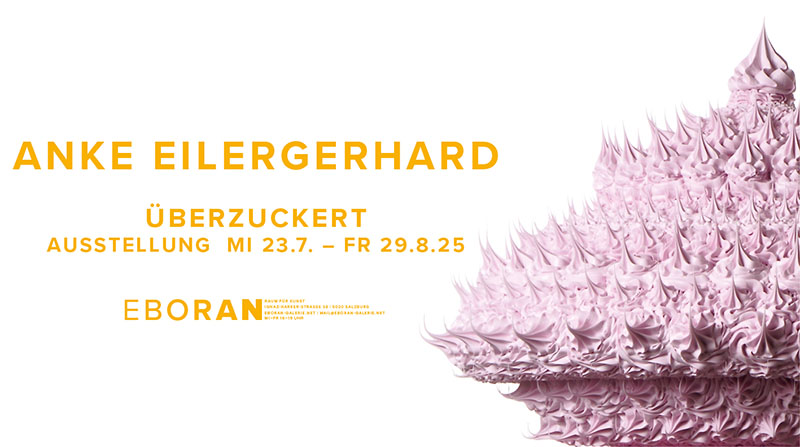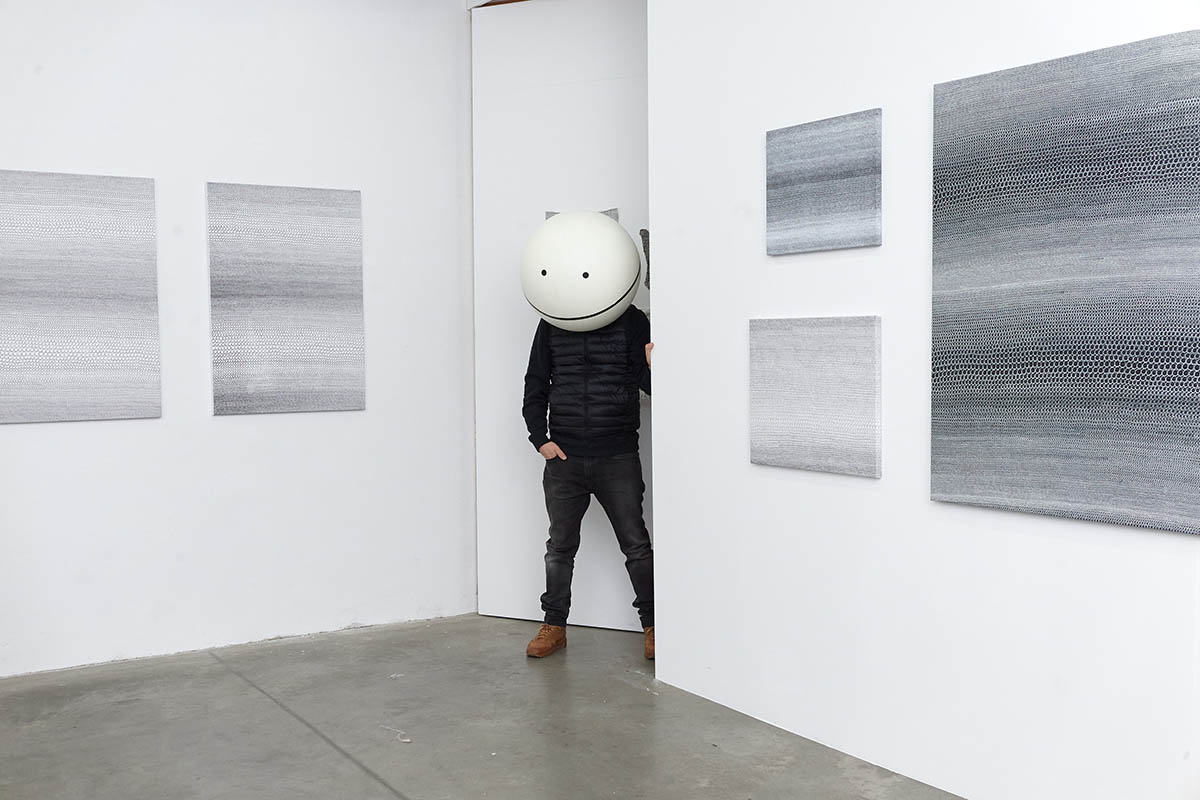
Could you tell us a bit about yourself, how you started doing art, and, more specifically, how the project you are exhibiting in Viadukt developed?
In the 1990s, I studied arts, but eventually transitioned to working in the advertising and corporate fields. Then, in 2019, I experienced a sort of burnout. I found myself sitting at the dining table, and I spontaneously began drawing. There was no prior thought process; I simply started sketching a network of smileys, which my family happened to like. Intrigued, I continued, and my network of drawings grew larger and larger. Each evening, before I went to bed, I experienced an incredible sense of euphoria without taking any drugs or antidepressants. It became a rewarding daily ritual that I cherished before sleep. After a year, I began contemplating why I was so drawn to this activity and why it brought me immense joy, and this is how the project became more serious.
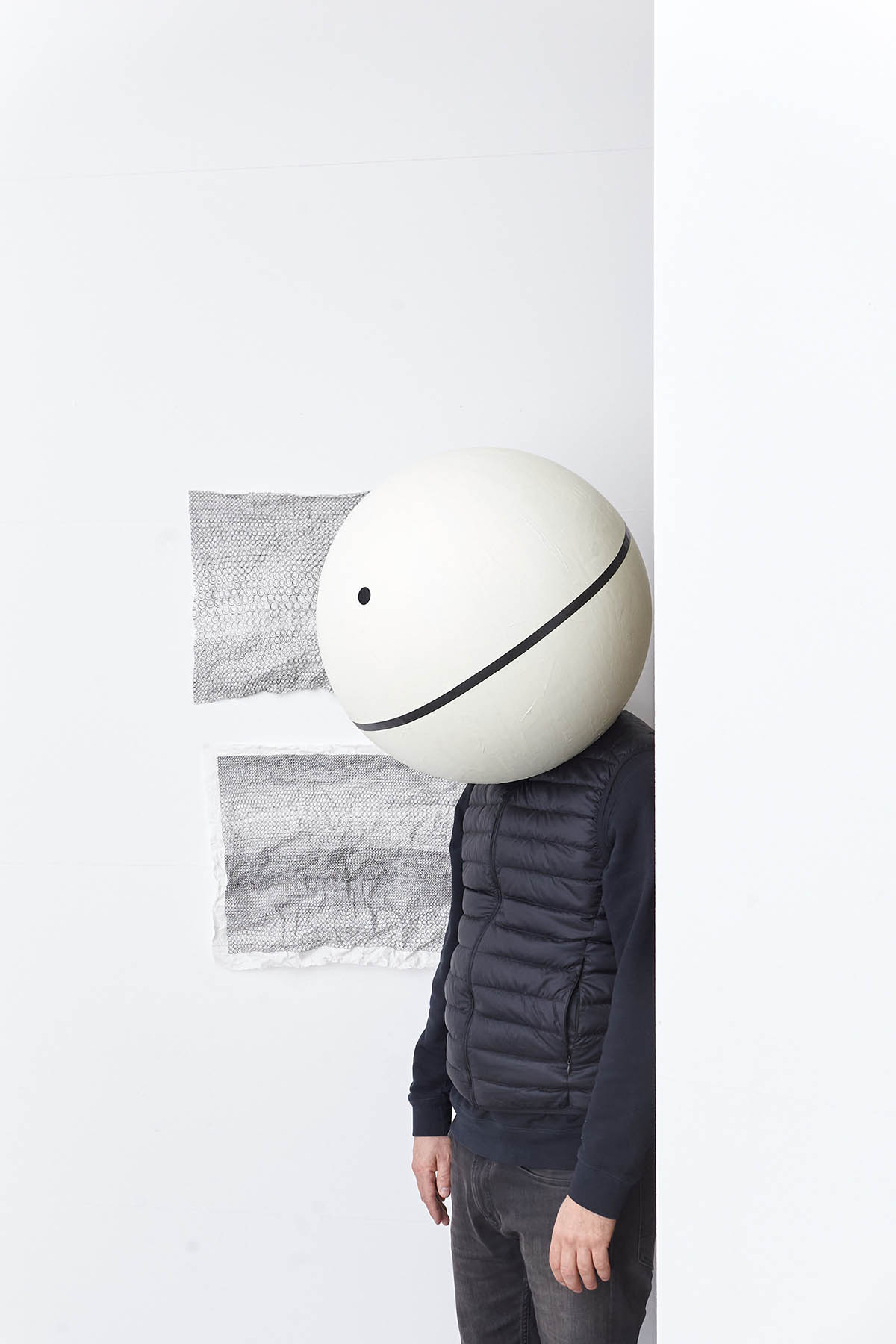
Your identity remains hidden (you do not show your face). What message are you trying to convey, especially in an era where the face of an individual, particularly an artist, is often prominently displayed?
I use my real name and don’t mind showing my face. But I wear this mask for a couple of reasons. One is that I like the idea of hiding sometimes. Another reason is that it helps me to disappear in the artwork as one of many faces. Nowadays, many people want to be unique, which is cool because it makes life diverse. But when you try too hard to be different, you might end up feeling alone.
The mask is not a big deal, but it’s there if I want it. I’m not making up a new identity; the mask is just an option for me.
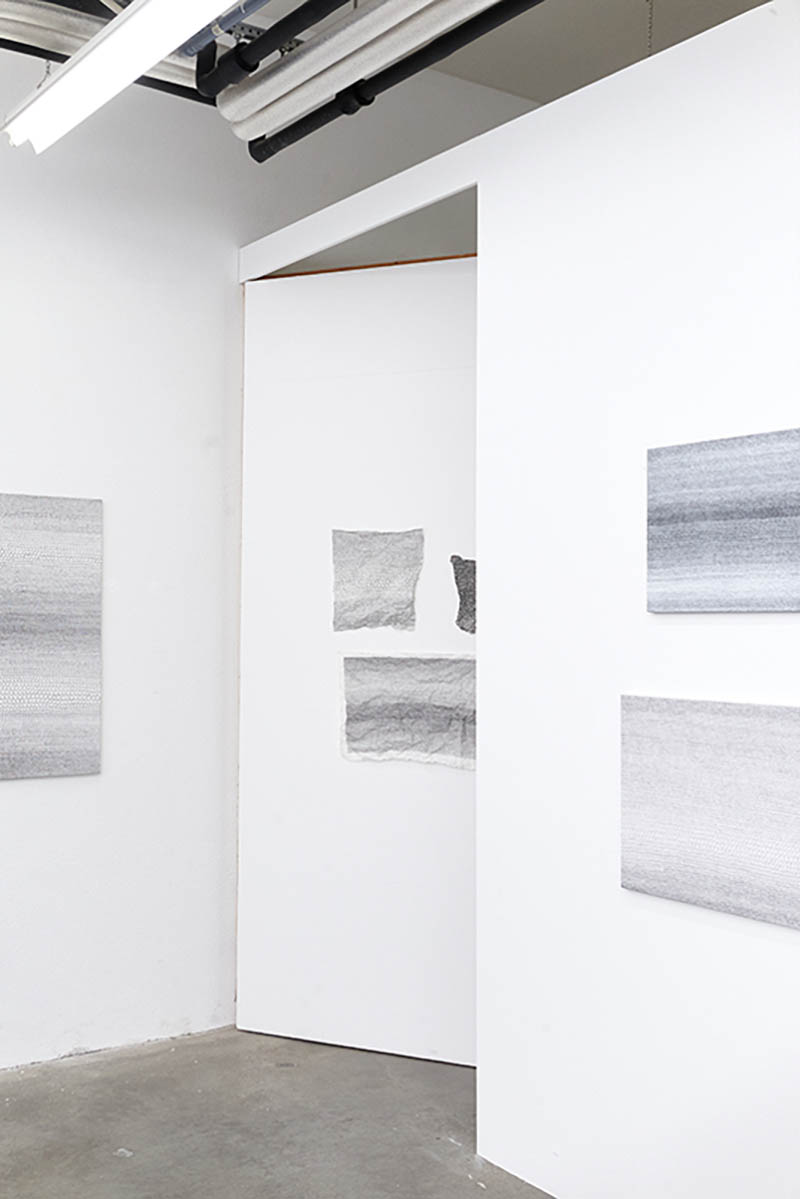
Jakob Würzl Foto: Daniel Lichterwaldt
The Smiley sign was invented in the 1960s. How is the Smiley related to your artistic practice? How does the widespread distribution of infinite smiles help communicate your message to the audience?
It’s a simple way to express emotions. I’m not interested in the Smiley itself; I am fascinated by the act of smiling. It’s our most powerful social signal because, when we smile, we connect with others. In diverse societies, people tend to smile more to bridge communication gaps. The smile helped humans achieve so much. Through smiling, we can show our will to collaborate, even without speaking the same language. Smiling unites people. My drawings depict networks organized around the concept of smiling.
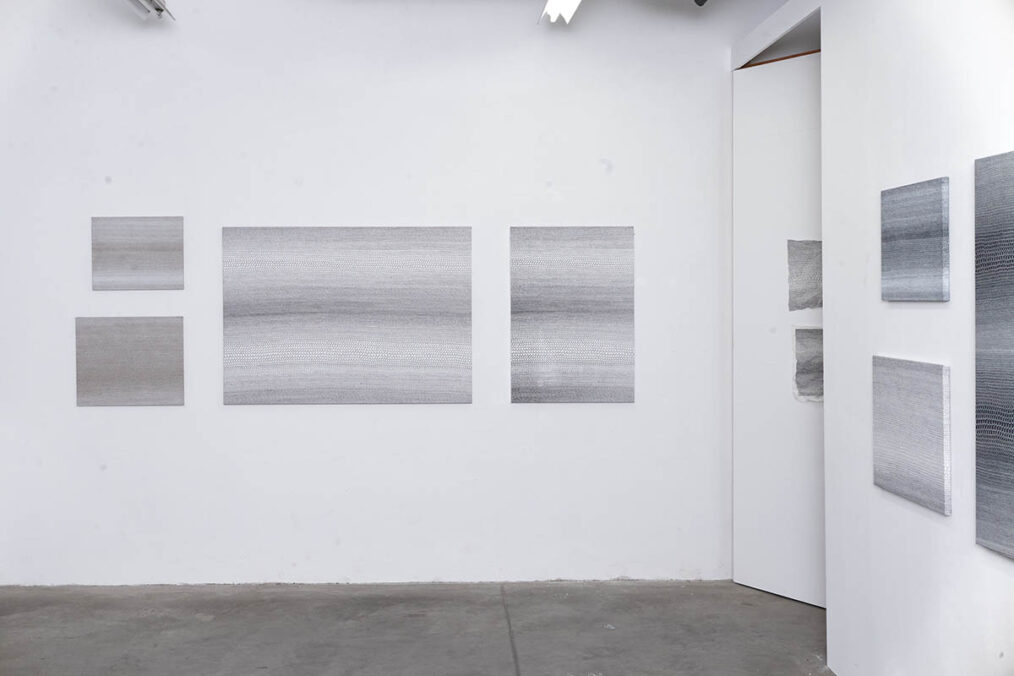
How is the audience reacting when seeing your work?
At first, I believed that the uplifting effect I experienced in the creation process might also impact others who closely examined my work. However, I discovered that it doesn’t resonate as profoundly with everyone. That´s why I offer workshops where people can do similar work. I think my experience is reproducible.
What was the process of building your first solo exhibition like, and what will we see at your exhibition
Everything began as hand-drawn pieces before I delved into the printing process, particularly screen printing at Viadukt in Vienna. They assisted me in producing dozens of screen prints based on my drawings. It was great to experience how well they understood what I wanted to do. Also, I am grateful for the team of Seite Zwei, who helped me transform my idea into a website and an exhibition poster as well. As the drawings resembled textures, I opted to print them on canvas. In addition to these prints, I will exhibit three original drawings on rice paper and several collages. The preparation process was happening gradually over the years. It was only last year that I ventured into printmaking after years of experimenting. Initially, when asked to do a show, I was unsure what I would exhibit. However, after making the decision, I proceeded with organizing the show, creating a website, and then establishing an Instagram presence. Initially, it wasn’t part of a grand plan; it was simply a personal endeavor. I never got bored of the process.
In the future, I would love to project visuals based on my drawings onto sacred buildings. I feel it will work out.
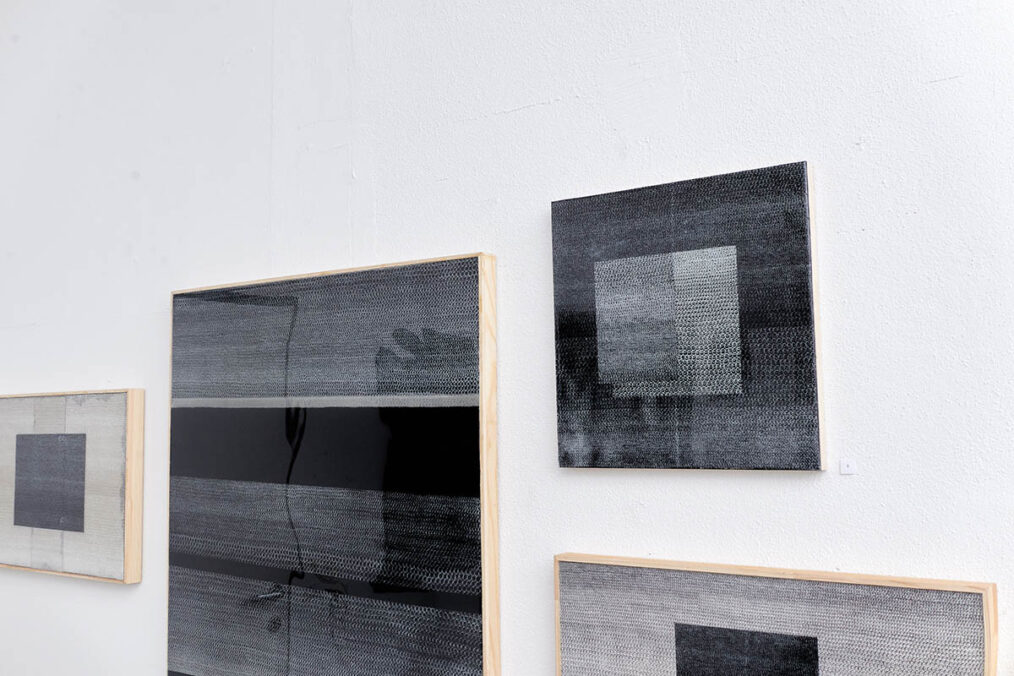
Why black and white, white and black?
I consider the drawings as narratives; to me, they resemble infinite texts. I believe that the contrast between black on white and white on black provides the most compelling representation of the text.
What is text for you?
Text is an idea transformed into an understandable form. It’s a powerful tool.
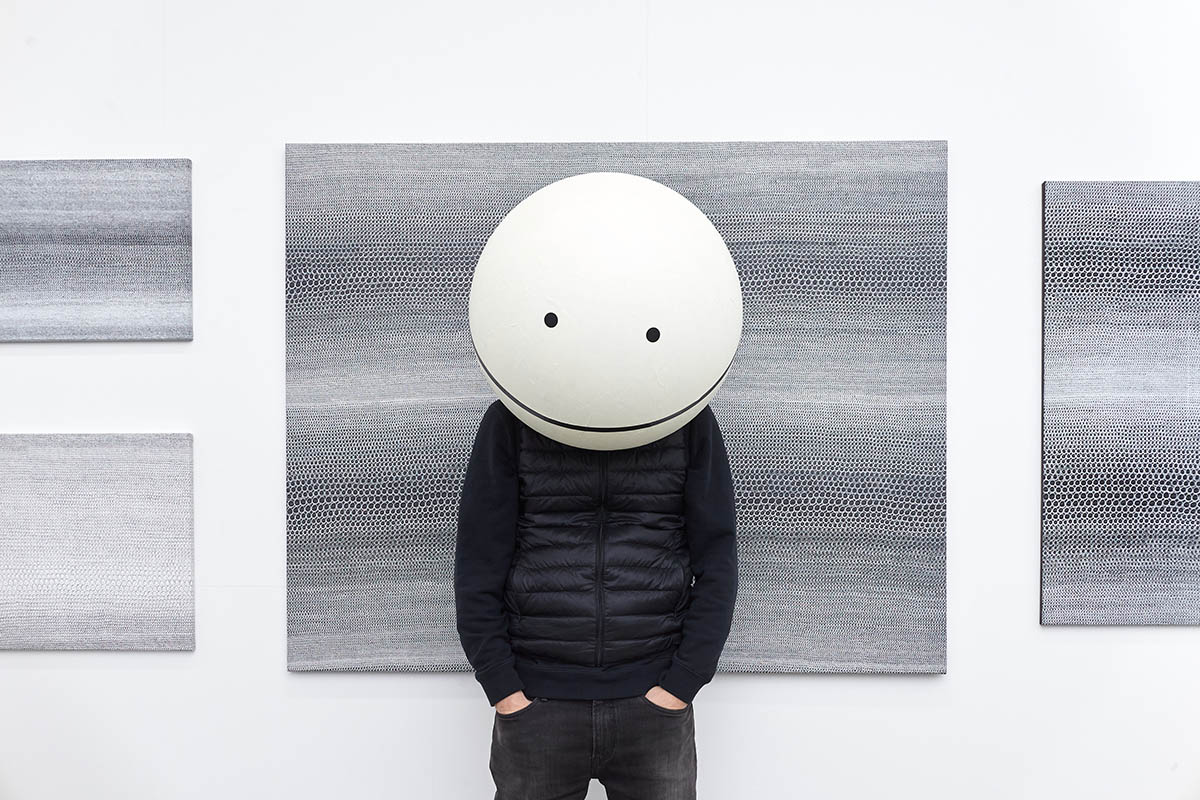
What are your wishes and plans for 2024?
Most importantly, I prioritize enjoying quality time with the people I love. Following that, I am open to receiving requests from galleries. Up until now, I haven’t actively pursued connections with galleries, but I am now taking steps to develop professional relationships within the art world. I aim to seek more feedback and create space for professional advice; these are my hopes and plans.
Exhibition: Jakob Würzl – Happiness Works
Opening: 01.12.2023 16:00 – 21:00
Exhibition dates: Fr., 8. Dez. 16:00-21:00, Fr., 15. Dez. 16:00-21:00
Location: Viadukt, Gumpendorfer Str. 132, 1060 Vienna
Jakob Würzl – www.jakwuerzl.com, www.instagram.com/jakwuerzl/
Viadukt was founded in 2008 by art and design educator Bernadette Meisel and is located in a beautiful courtyard in Vienna’s 6th district. The workshop sees itself as an open screen-printing studio where artists can realize screen printing projects with or without support. The workshop also provides a place where community and exchange can take place. www.viadukt.at



